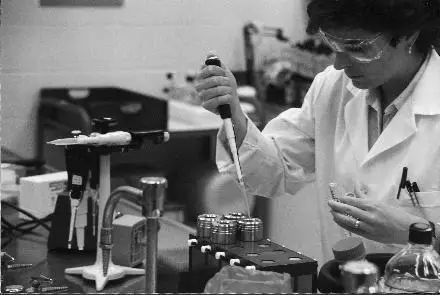Approximately 23 million U.S. citizens rely on their own private drinking water supplies. Most of these supplies are drawn from ground water through wells, but some households also use water from streams or cisterns. These households must take special precautions to ensure the protection and maintenance of their drinking water supplies.
How Can I Test The Quality Of My Private Drinking Water Supply?
Private water supplies should be tested annually for nitrate and coliform bacteria to detect contamination problems early. They should be tested more frequently and for more potential contaminants, such as radon or pesticides, if a problem is suspected.
Many laboratories are available to test water quality. Lists of laboratories certified by your state or the U.S. EPA may be available from your local or state public health department. Some local health departments also test private water for free. Phone numbers for your local, county, or state health department are available under the government listings in your phone book.
If you use a private laboratory to conduct the testing, nitrate and bacteria samples will typically cost between $10 and $20 to complete. Testing for other contaminants will be more expensive. For example, testing for pesticides or organic chemicals may cost from several hundred to several thousand dollars.
The laboratory usually supplies sample bottles. Depending on the type of test to be completed, the bottles may contain preservatives or include special instructions for handling the samples. Private water can most easily be sampled at the drinking water tap by carefully filling the bottles to avoid spilling or getting other contaminants into the bottle. For nitrates and other basic water tests, the bottles can usually be mailed to the laboratory. Some tests, such as those for coliform bacteria, may require that the sample bottles be kept cool until they are delivered to the laboratory for analysis.
Most laboratories mail back the sample results within days or several weeks. The results typically indicate whether a particular contaminant was detected in the sample. If a contaminant is detected, the results will include the concentration of the contaminant and an indication of whether this concentration exceeds a drinking water quality standard. If a standard is exceeded in your sample, you should retest the water supply immediately and contact your public health department for assistance. Some problems can be handled quickly. For example, high bacteria concentrations can sometimes be controlled by disinfecting a well. Filters or other on-site treatment processes may also remove some contaminants. Other problems may require a new source of water, such as a new, deeper well. If serious problems persist, you may need to rely on bottled water until a new water source can be obtained.
How Can I Protect My Private Water Supply?
You can protect your water supply by carefully managing activities near the water source. For households using a domestic well, this includes keeping contaminants away from sinkholes and the well itself. Hazardous chemicals also should be kept out of septic systems.
Several sources of technical assistance are available to help you protect your water supply. The organization Farm*A*Syst/Home*A*Syst provides fact sheets and worksheets to help farmers and rural residents assess pollution risks and develop management plans geared toward their circumstances. For example, Farm*A*Syst helps farmers and ranchers identify pollution risks from nitrates, microbes, and toxic chemicals. Home*A*Syst reaches homeowners who face pollution risks from faulty septic systems, pesticide use, petroleum leaks, and hazardous waste disposal. More information about the programs is available from:
Farm*A*Syst/Home*A*Syst Program
B142 Steenbock Library
University of Wisconsin
Madison, WI 53706
608 262-0024
e-mail: farmasyst@macc.wisc.edu
web site: http://www.wisc.edu/farmasyst
Local health departments and agricultural extension agents can also provide general technical assistance. They can be found under the government listing in your phone book. The U.S. EPA Safe Drinking Water Hotline also provides access to publications and technical assistance over the phone at (800) 426-4791. The Hotline may also be able to direct you to other sources of state and local assistance.
Protecting Your Ground Water Supply
|
Ways to save money AND help the environment:
Eat healthier AND save money: Instant Pot Duo Crisp 11-in-1 Air Fryer and Electric Pressure Cooker Combo with Multicooker Lids that Fries, Steams, Slow Cooks, Sautés, Dehydrates
Save water AND money with this showerhead adapter, it lets the water flow until the water is hot, then shuts off water flow until you restart it, ShowerStart TSV Hot Water Standby Adapter
Protect your health with these:
Mattress Dust mite-Bedbug protector, 100% Waterproof, Hypoallergenic, Zippered
Handheld Allergen Vacuum Cleaner with UV Sanitizing and Heating for Allergies and Pet, Kills Mite, Virus, Molds, True HEPA with Powerful Suction removes Hair, Dander, Pollen, Dust,
Immune Support Supplement with Quercetin, Vitamin C, Zinc, Vitamin D3
GermGuardian Air Purifier with UV-C Light and HEPA 13 Filter, Removes 99.97% of Pollutants
5 Stage Air Purifier, Features Ultraviolet Light (UVC), H13 True Hepa, Carbon, PCO, Smart Wifi, Auto Mode, Quiet, Removes 99.97% of Particles, Smoke, Mold, Pet Dander, Dust, Odors
Interesting Reads:
THE PREPPER'S CANNING & PRESERVING BIBLE: [13 in 1] Your Path to Food Self-Sufficiency. Canning, Dehydrating, Fermenting, Pickling & More, Plus The Food Preservation Calendar for a Sustainable Pantry
The Backyard Homestead: Produce all the food you need on just a quarter acre! Paperback
The Citizens' Guide to Geologic Hazards: A Guide to Understanding Geologic Hazards Including Asbestos, Radon, Swelling Soils, Earthquakes, Volcanoes
The Uninhabitable Earth: Life After Warming
Book: The Sixth Extinction:
An Unnatural History Paperback